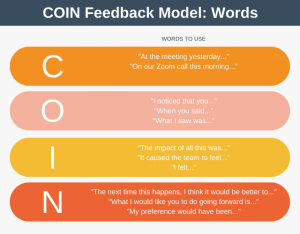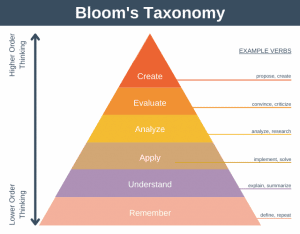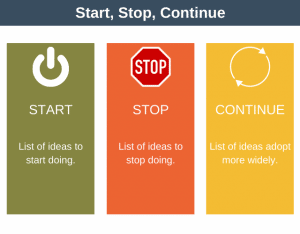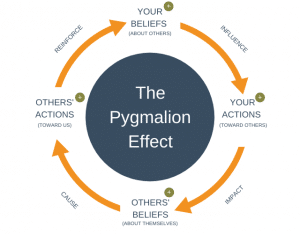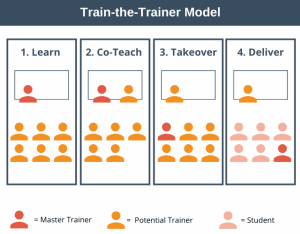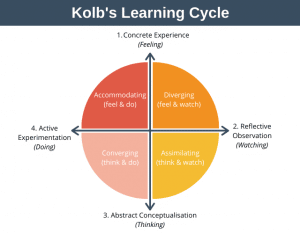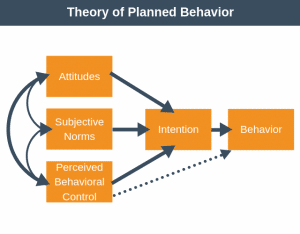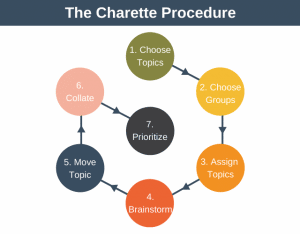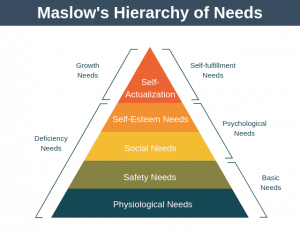Mayo’s Human Relations Motivation Theory, which contains the Hawthorn Effect, is a theory of motivation in the workplace.
Have you ever tried to get your team motivated in the workplace? You try various tactics to get your team fired up but nothing really seems to work, and everything stays the way it was. It’s frustrating and demoralizing.
So, what should you do to try and motivate your team to be more productive?
Motivation theories can be helpful in giving us research-based tools to help us raise the performance of our team.
Before Elton Mayo, the prevalent motivational theory for workplace productivity was that of Frederick Taylor, Scientific Management. This theory proposed that employees were motivated primarily by pay. Workers were generally thought of as lazy and treated as just another piece of equipment.
Taylor was an engineer and he viewed productivity through this lens. As such, no recognition of the needs of human beings was considered in Scientific Management.
Mayo’s Motivation Theory, containing the Hawthorn Effect, led to the Human Relations School of thought. This highlights the importance of managers taking more interest in their employees. Mayo believed that both social relationships and job content affected job performance.
Who Was Elton Mayo?
Elton Mayo was born in Australia in 1880. Mayo worked from 1926-1949 as a professor of Industrial Research at Harvard University. He is best known for his work based on the Hawthorn Studies, as well as his book, The Human Problems of an Industrialized Civilization.
The Hathorn Studies
Hawthorn was a Western Electric plant-based in Cicero, Illinois. At its peak, the factory employed close to 40,000 people. The Hawthorn Studies were a large group of productivity studies conducted between 1927 and 1933 that collected large data sets.
The very first study that was done concerned workplace lighting. The study sought to understand if changing lighting conditions resulted in increased or decreased productivity.
To run the experiment two groups were created. A control group and a group with improved lighting conditions. What happened when the lighting was improved for one group? Well, productivity improved for that group.
But, here’s the strange thing. Productivity also improved in the control group! When they reduced lighting for one group productivity also increased! Not only that, but each change (increase or decrease) also lead to increased employee satisfaction.
Many other experiments were run as part of the Hawthorn Studies. Their results also contradicted what was expected from Scientific Management.
So, what’s going on?
This is where Mayo comes in. He was the person who was able to make sense of these results which ran contrary to what everyone expected.
He recognized that the worker isn’t a machine and that how they are treated and their environment is important. He recognized that work is a group activity and employees have a need for comradery and recognition. They have a need for a sense of belonging.
In a nutshell, productivity has a psychological element to it.
The Hawthorn Effect
In addition to the social concern for the worker, one of the big things to come out of the Hawthorn Studies was the Hawthorn Effect. This states that changes in behavior happen when you are monitoring or watching employees. The mere presence of someone watching you changes the way you behave. You start to perform better.
This explains why productivity improved in the first experiment when the lighting was improved, and also when it was made worse.
The Hawthorn Study was the first of its kind to recognize that if you treat an employee a certain way, a good way, they might be more productive for the organization.
Mayo’s Theory of Motivation
Based on analyzing the data of the Hawthorn Studies, Mayo proposed that employees aren’t that motivated by pay and environmental factors. Instead, positive relational factors play a bigger role in productivity.
The importance of group working cannot be overstressed. It is the group that determines productivity, not pay and not processes.
For example, if someone is working too fast they will be ostracised from the group. Likewise, if someone is working too slow the same thing will happen.
Mayo created this matrix to show how productivity changed in different situations.
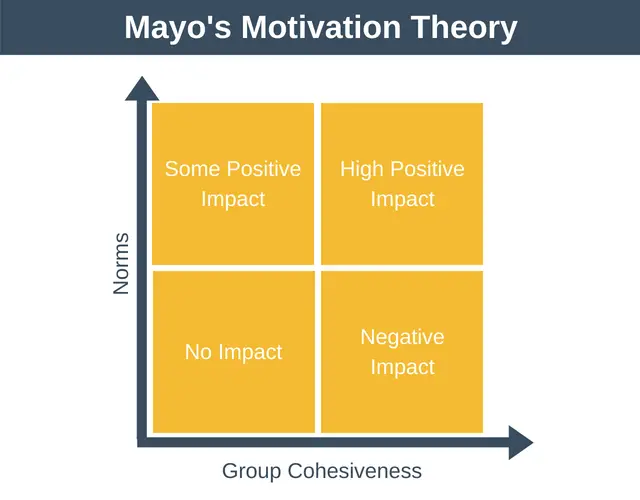
You can think of group cohesiveness as being how well the group gets on, their comradery. You can think of norms as being whether the group encourages positive or negative behaviors.
There are four positions in the matrix:
1. Groups with low cohesiveness and low norms
These groups are simply ineffective in terms of productivity. A team like this wouldn’t last very long. This is because nobody would be motivated to be productive in any way.
2. Groups with high cohesiveness and low norms
These types of teams have a negative impact on productivity. Here the team gets on great, but negative behaviors are encouraged rather than positive ones. Gangs are often cited as examples of this type of group.
3. Groups with high norms but low cohesiveness
This type of team can have a limited positive impact on productivity. This is because each team member will be working towards their own success rather than that of the team. If one team member does something great, then good for them, but it doesn’t really improve the productivity of the rest of the team.
4. Groups with high norms and high cohesiveness
These are the teams that can make the greatest positive impact on productivity. In this type of team, each team member supports each other to succeed. People are personally committed to their success and also to the team’s success. A strong support network forms within this type of team.
Using the Model
To use the model to boost the productivity of your team, you should do the following:
1. Strong Communication
Communicate regularly with the members of your team. Giving regular feedback is an important part of this.
Why? Because workers in the Hawthorn Studies were consulted and had the opportunity to give feedback. This resulted in improved productivity.
2. Group Working
Your team should be working as a group rather than as individuals. If your team is too big to work as one group then try to break it down into smaller groups. Try to avoid people working individually. If you give out a bonus, don’t just make it about what was achieved. Instead, include an element of the bonus that is about how the result was achieved and the contribution to teamwork. This will encourage group cohesiveness.
Why? Hawthorn employees didn’t previously work in teams, but when they did, productivity improved.
3. Increased Involvement
Try to have greater involvement in each team member’s life. Ask how their day has been? Ask about their weekend and what’s going on at home. Here you’re trying to strike the right balance between being supportive and allowing people to keep their autonomy.
Why? Because Hawthorn workers responded well to the increased attention they were receiving. Both their job satisfaction and productivity increased.
Criticisms of the Model
The main criticism of the model is that it is seen as manipulative. This is because it encourages companies to pretend they are interested in the well-being of their employees. The reality might be that they are only interested in increasing productivity.
Summary
The Hawthorn Effect states that your productivity changes when someone is watching you. It increases.
Mayo not only identified the Hawthorn Effect, he was also the first to identify the importance of the psychological element of workplace motivation. He recognized that if you treat an employee well, they might be more productive for the organization.
